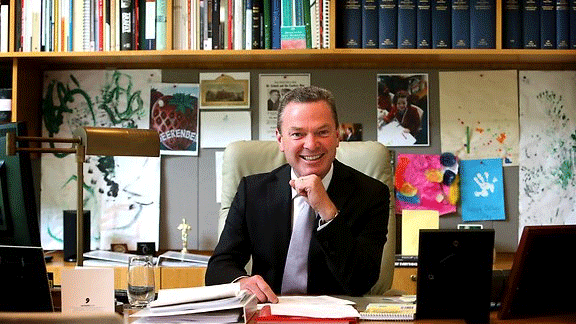Who benefits from higher education?

Whatever else can be said about education minister Christopher Pyne, let no one say he doesn’t have a strong sense of fairness. Or, at any rate, a strong sense that he should act like he does.
In a late August address to the National Press Club, Pyne quoted favourably the words of former prime minister Paul Keating, who once asked if it was fair that the education system was “paid for by the taxes of all”, including those without a university education.
Pyne says that university graduates earn up to 75 percent more than high school graduates. Whether or not Pyne means on average, or up to, 75 percent more is unclear. The actual figure, as calculated by the Organisation for Economic Cooperation and Development (OECD) is a 35 percent average increase for tertiary graduates’ income over those who finish only year 12.
At any rate, Pyne would have us all believe that students today are really nothing more than leeches on the public purse, parasites who are mugging low paid workers without a tertiary education for our own private benefit.
However, a recent report into higher education, commissioned by the OECD, shows that while there is a private return for university students, it is dwarfed by the scale of the return for the government. For every dollar that an Australian man puts into his university degree, according to the study, he will on average receive $3.20 over the course of his lifetime. For women, the return is $2.50.
In contrast, the government, per dollar invested in university education, receives a return of $6 for every man and $4.50 for every woman. The money comes in the form of taxes and in reduced unemployment payments. This makes the Australian education system one of the most “profitable” in the world.
That’s not all. One thing the OECD report ignores is the function of the university system: to pump out graduates who “power Australia’s economy, productivity, research, innovation, global engagement and industrial transformation”. That’s straight from Universities Australia, the peak representative body for university administrations. Universities exist to serve the interests of the Australian capitalist class, which controls and dictates production, investment and the livelihoods of millions of workers.
As the number of Australians with a tertiary degree rises (from 17 percent in 2001 to 25 percent in 2013), so too does labour productivity. The latter has increased by nearly 50 percent since 1995; wages in the same period increased by a little over 22 percent.
The average Australian worker generates $53 an hour for his/her employer. The gap between wages and productivity is no coincidence; it’s the design behind all the talk of a “highly educated workforce”, which both Pyne and the university vice-chancellors want to see. It is primarily the capitalists who receive the benefit of that workforce, because they collect the profits.
The government and the capitalists, then, are the primary beneficiaries of higher education. “Fairness” would be the exact opposite of the government’s plans to cut subsidies and introduce deregulated fees.
Rather it would mean a system in which education is free and accessible to all and paid for by a tax on employers.